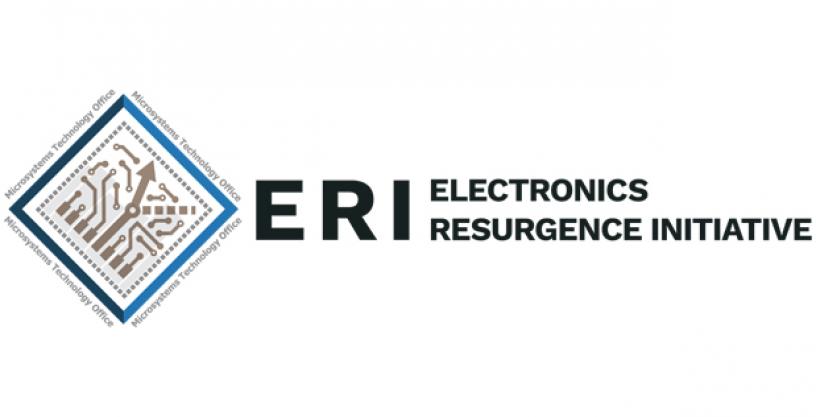
Expanded program portfolio seeks to increase access to DoD-specific electronics manufacturing capabilities, enhance hardware security, and ensure ERI investments translate to DoD applications
Nov 1, 2018
First announced in June 2017, DARPA’s Electronics Resurgence Initiative (ERI) – a five-year, upwards of $1.5B investment in the future of domestic electronic systems – is rolling out the second phase of its research priorities. Comprised of several ongoing DARPA programs – including the six recently awarded ERI “Page 3” programs –ERI addresses long-foreseen obstacles to Moore’s Law and the challenges impeding 50 years of rapid progress in electronics advancement. The next phase of ERI will focus on further enmeshing the technology needs and capabilities of the defense enterprise with the commercial and manufacturing realities of the electronics industry.
ERI Phase II aims to address three key issues raised by the electronics community during a series of workshops that DARPA held during the San Francisco-based ERI Summit in July. These key issues are the need to support domestic manufacturing options and enable them to develop differentiated capabilities for diverse needs; a demand to invest in chip security; and a desire to create new connections between ERI programs as well as to demonstrate the resulting technologies in defense applications.
“Through ERI, DARPA is seeding the foundation of a more robust, secure, and heavily automated electronics industry to move us from an era of generalized hardware to specialized systems,” said Dr. Bill Chappell, director of DARPA’s Microsystems Technology Office (MTO). “The U.S. electronics industry has provided global leadership in the electronics arena since the invention of the transistor. The first phase of ERI was a major investment into the research and development required to stay competitive by exploring specialization with novel circuit materials, architectures, and designs. ERI Phase II seeks to build on that investment and push us toward a domestic semiconductor manufacturing sector that can implement specialized circuits; demonstrate that those circuits can be trusted through the supply chain and are built with security in mind; and are ultimately available to both DoD and commercial sector users.”
To create unique and differentiated domestic manufacturing capabilities, ERI Phase II will explore the addition of complementary and alternative vectors to traditional CMOS scaling. The first program in this space is Photonics in the Package for Extreme Scalability (PIPES), which will explore ways to bring the benefits of optical scaling directly to chips. PIPES will also work to establish a domestic ecosystem that facilitates long-term access to these new photonics capabilities for both commercial and DoD users. By significantly reducing the energy demands and challenges associated with moving data across digital microelectronics, the program could reduce the effort required to tie hundreds of GPUs together, and enable massive parallelism capable of supporting current and emerging data-intensive applications like machine learning, large-scale emulation, and advanced sensors.
Together with PIPES, other ERI Phase II investments are designed to ensure the development of novel manufacturing capabilities and support a strategy for the enduring availability of differentiated, high-performance electronics for the DoD and its commercial partners. This is important for the Department because its electronics manufacturing needs are numerous and diverse, and its systems have unique requirements and specific functionality. Although traditional CMOS scaling for digital processing is still an important area of investment, many critical DoD-relevant electronics will likely derive from alternative and complementary vectors. Potential areas of exploration under ERI Phase II include the integration of microelectromechanical systems (MEMS) and radiofrequency (RF) components directly into advanced circuits and semiconductor manufacturing processes. These efforts will build on the existing work in the ERI Materials & Integration research thrust, complementing current ERI programs like FRANC, 3DSoC, and CHIPS.
Throughout the remainder of 2018, DARPA plans to announce additional ERI Phase II investments relevant to issues highlighted at the ERI Summit. Potential areas of exploration include enabling the traceability of electronics components – from design to use – and the development of electronics that can enforce protections for security and privacy. Potential ERI Phase II programs will consider the need for assured electronics that incorporate protections from security risks. These efforts will build on ERI’s Design and Architectures research thrusts and leverage existing DARPA programs, such as SSITH that address hardware security and verification challenges.
ERI Phase II will also investigate ways to increase the connections between the various ERI efforts – from fundamental research programs to technology application programs – as well as emerging and future applications of ERI technologies developed across all sectors to defense-specific systems. These connections between programs and end users are key to ERI’s overall success, driving DARPA’s ability to deliver differentiated capabilities to the DoD and its partners. Programs under development should help ensure that the technological advances that derive from ERI will deliver significant impact for national security. Potential areas of exploration include ERI applications in large-scale physical emulation, cognitive RF systems, next-generation satellites, cybersecurity, and beyond.
To learn more about DARPA’s Electronics Resurgence Initiative, please visit: https://www.darpa.mil/work-with-us/electronics-resurgence-initiative
To learn more about the PIPES program, please visit: http://www.darpa.mil/news-events/2018-11-01
###
Media with inquiries should contact DARPA Public Affairs at outreach@darpa.mil
